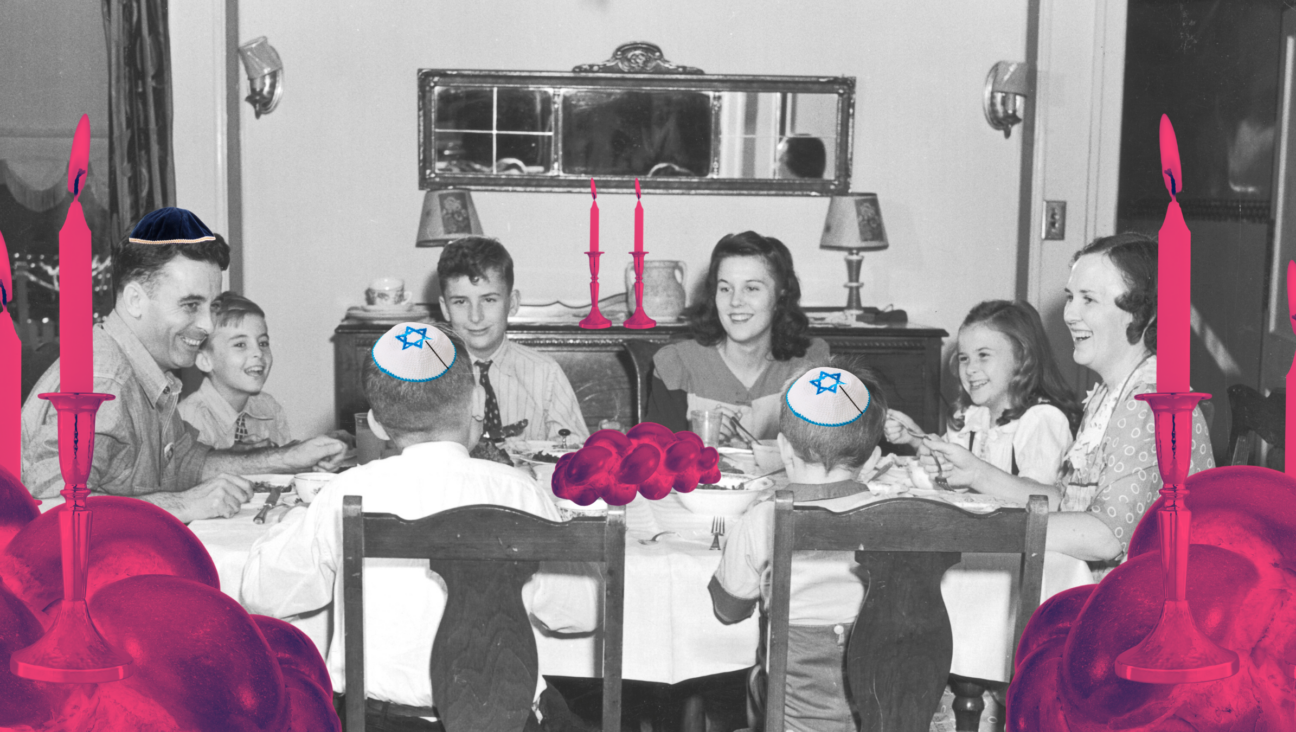How This Jewish Cantor Found A Happy Marriage — To An Evangelical Pastor

Image by iStock
As a Cantor, I’ve sung the Sheva Berachot (seven marriage blessings) countless times and I know the words by heart. They were recited for me at my first wedding some seventeen years ago. My then-husband and I simply followed the familiar formula: place a Jewish groom and a Jewish bride under a chuppah (wedding canopy), do blessings over wine, read a ketubah (marriage contract), break a glass — and poof, you’re done. Nothing in the ceremony was unfamiliar to anyone there, but unfortunately the marriage didn’t last. Two beautiful children and one heartbreaking divorce later, an unexpected chance for real happiness allowed me to be the last thing I thought I’d ever be again: a bride under a chuppah.
Falling in love with my fiancé and his two wonderful children was effortless; planning our wedding, however, proved to be much more difficult. While we wrestled with the decisions that all engaged couples face, in all honesty, the largest obstacle to overcome was that we are Inter-partnered. He is a Christian— and an Evangelical Christian Minister to boot. Our experience has been that if you are Jewish, you probably don’t know what that means. To most Jews, ‘Evangelicals’ are either a Right-leaning American voting bloc or they are confused with Evangelists (those who see their role in the Christian faith to share their faith and convert ‘non-believers’). Neither is an accurate description.
We soon discovered that I had failed my tribe by “choosing” to date and subsequently fall in love with a non-Jew. Members of his circle were quick to point out that he was “unequally yoked” to a non-believer. Our union was ethically insurmountable among many officiants, and downright explosive for our Jewish community and family. Barely two months before the wedding, we finally settled on a dear friend of mine to marry us. She has a special talent for crafting unique life cycle ceremonies.
Creating our wedding ceremony was to be a bigger challenge than we anticipated. This was a ritual that needed to combine the both of us. We didn’t want to create a hybrid of our two faiths that didn’t represent our home or our life together. Neither of us was comfortable having a purely Jewish or purely Christian wedding, especially when this would have been done mainly to appease those who would probably not support our union anyway.
We had already decided on certain visual elements that were important to me: a chuppah and the breaking of a glass. We knew that we wanted to involve our children in some way; and we knew we wanted God to be present — a purely civil ceremony simply wouldn’t reflect the important role God plays in our lives.
My friend asked me if I wanted the traditional seven blessings (Sheva Berachot). My first hesitation was that they were all in Hebrew. I wanted my fiancé to be able to engage with the ceremony at all times. The biggest problem, however, was that the last of the blessings speaks specifically to a Jewish couple.
The more I lived with the idea, the more I realized that I had already accepted long ago that I was not marrying a Jew. I had gone through a period of mourning, saying goodbye forever in my heart to that little bit of Yiddishkeit I had hoped for and failed to capture even with my first marriage. I was at peace with my decision and completely happy.
The Sheva Berachot were not for us. I was at peace with that too.
In the end my friend wrote beautiful blessings for our children to say to us and she read from Song of Songs (Shir Hashirim). My fiancé wrote every word of his wedding vows and inscribed them in a book that I could keep forever, like a ketubah.
I used the words that speak from my soul as I wrap tefillin (phylacteries) to promise myself to him:
I will bind myself to you forever.
And I will bind myself to you in righteousness, justice, kindness, and mercy.
I will bind myself to you with fidelity, and [through our union we] shall know God.
Some might say our wedding ceremony had some loose ends. We would confidently tell you that those loose ends came from two distinct strings that were tied in a very firm and lasting knot.
The author is a cantor in a reconstructionist congregation.























